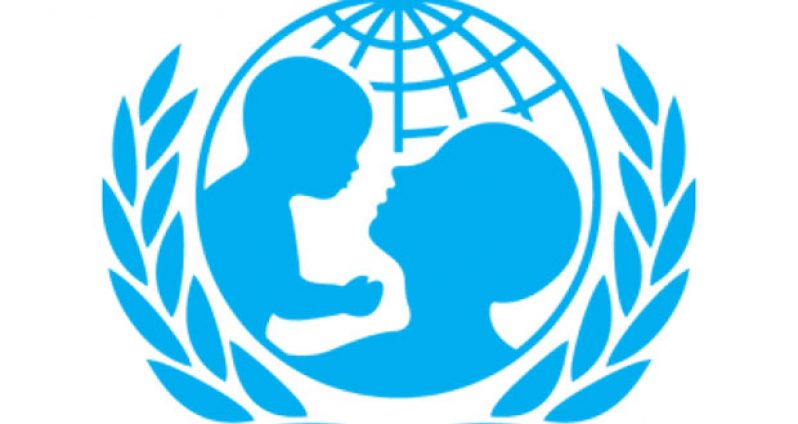A REPORT compiled by the United Nations Children Fund (UNICEF) revealed that mass emigration of Guyanese due to failures in the job market creates devastating social and economic effects and has resulted in broken families, brain drain and an estimated 8% loss of the country’s Gross Domestic Product (GDP).The report on the 2016 Guyana Situation Analysis of Children and Women (SitAn), a document compiled through a cooperative effort between UNICEF and Government of Guyana, was handed over to First Lady Sandra Granger and Minister of Social Protection, Volda Lawrence at a special ceremony at the Herdmanston Lodge Wednesday.
The report was prepared with the objective of supporting the new government in its development and implementation of national strategic plans and programmes. The goal of the report is to “advance the realization of the rights of development of Guyanese children with a strong equity focus on the most vulnerable children and their families.”
The report noted that 422, 000 Guyanese live in other countries and while this relocation contributes to the country’s economy through the influx of remittances, such high emigration is influenced by “lack of internal economic opportunities, indicating failures in the job market.”
“On one hand, the influx of remittances is an important factor for the country’s economy and represents an informal safety net for many families. On the other hand, high emigration is influenced by lack of internal economic opportunities, indicating failures in the job market. On the economic side, this brain drain creates losses of around 8% of the country’s GDP. On the social side, emigration breaks families and force children to live far from one or two parents.”
The report said despite Guyana’s good GDP performance, in taking into consideration the GDP per capita, the country remains the third poorest in the Western Hemisphere, after Haiti and Nicaragua.
“Unemployment is high, and it is particularly concerning for the young population, which represents more than 60% of Guyana’s population. Since 2002, youth unemployment has been consistently higher than 30% and is currently estimated to be about 40%.”
The country’s last official poverty measurement was done in 2006, even before the world was hit by economic crises in 2008, and according to that report, some 36.1% of the population was living in poverty and 18.6% were living in extreme poverty.
“Poverty is higher in the interior of the country, and for those families living in the rural areas … Poverty in Guyana has a child’s face. Similar to previous measurements, the poverty number from 2006 shows that younger age cohorts have a significantly higher poverty headcount than older ones.”
It also disclosed that 33.7% of young people between ages 16-25 lived in poverty in 2006, and 47.5% of children below the age of 17 were poor.




.png)









